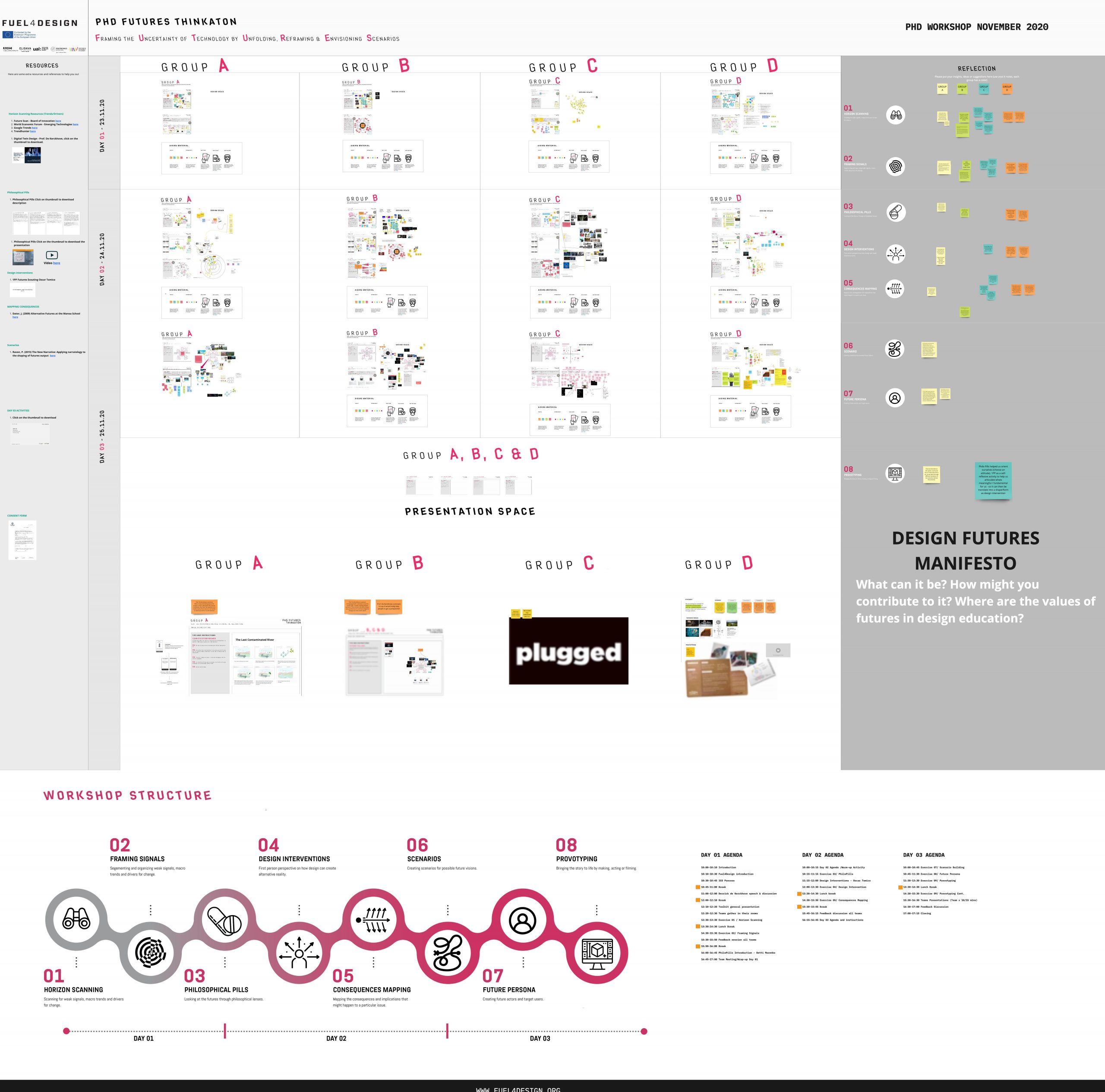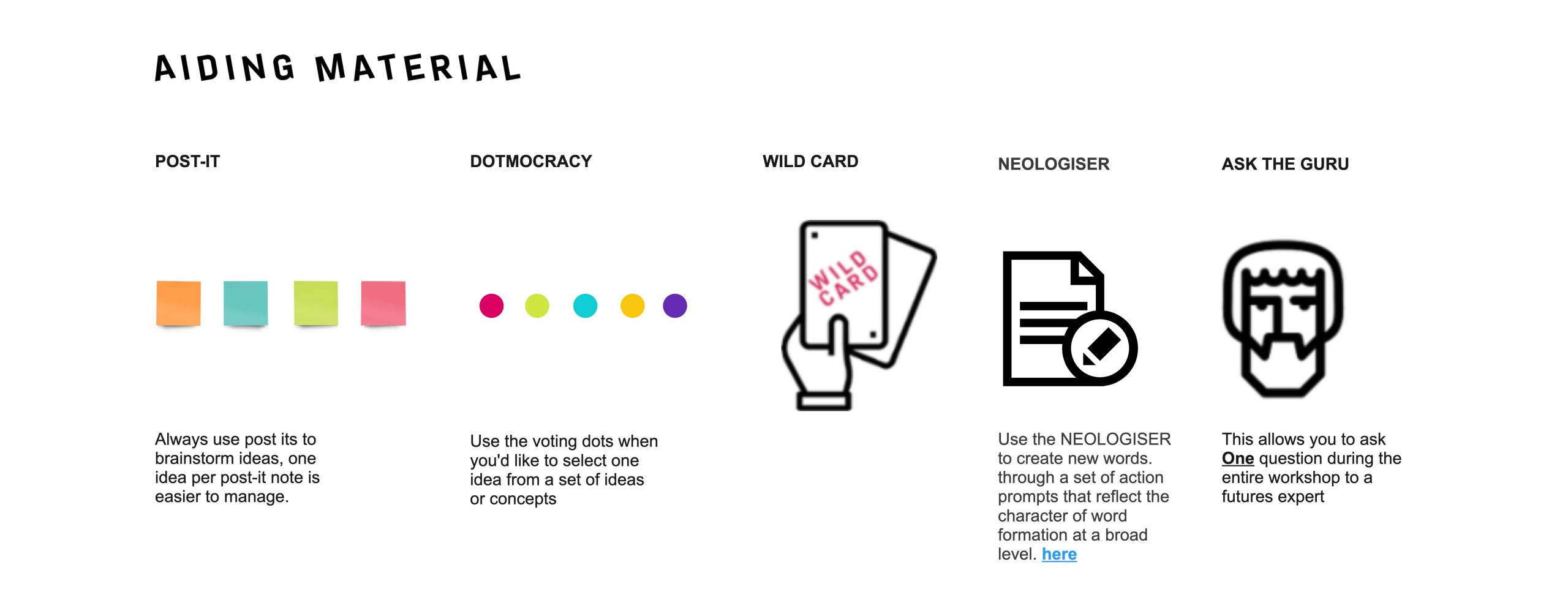By fall 2020, we (PoliMi team) have managed to organize and moderate the PhD Futures Thinakton C2 Event.
1.Introduction
Due to COVID-19 emergency, the Thinkaton was conducted digitally using platforms specially made for teams working remotely which are “Microsoft Teams” and “Miro: An Online Visual Collaboration Platform for Teamwork”. The platforms, canvases and tools used during the presentation were prepared beforehand to make sure participants would have a smooth process and organised structure for the workshop; this helped participants to save time usually spent in organising digital working spaces.
The Design Futures Thinkaton was an intensive three days’ workshop for PhD candidates. The event was meant to be a training event to introduce futures literacy methods to PhD researchers and to apply such futures literacy methods and content in the PhD research practice. Besides testing and validating the use of the “Futures Design” toolkit during its development phase. We also tested the integration of other Intellectual outputs such as the Philosophical Pills, Design Interventions and some essentials from the Lexicon during the workshop.
2.Participants
Participants of the workshop were 19 PhD researchers from each of the partner institutions: Politecnico di Milano, Oslo School of Architecture and Design, University of the Arts London and Barcelona School of Design Engineering ELISAVA.
Their research interests and backgrounds varied from industrial design, interior design and communication design. Participants were contacted beforehand with the pre-preparation material in order to familiarize themselves with the project and activities of the workshop. Some articles from the FUEL 4Design “Futures Lexicon” have been shared with them as a background material to build upon in the workshop.
Participants have been grouped into 4 groups, each facilitated by one of the research project members. All of the participants worked on the same topic but each one focused on a precise point of view.
3.Organization and structure
The workshop was meant to be a training event. So, we introduced some sessions and discussions in-between the group working sessions in order to further develop the understanding of the participants about the design futures.
The main topic of discussion for the workshop was presented by Prof. Derrick de Kerckhove on the topic of “Digital Twin”. Prof. de Kerchove triggered the discussion about the relation between the digital twin and design. He raised inquiries about the implications of digital twin in the future context such as How do we make this new and complex technology easy to use, secure and useful? And How do we model the behaviour of this twin?
The purpose of introducing a topic for discussion was to trigger the critical discussion about future issues and to inaugurate the debate between the team members.
The workshop was an intensive three days’ workshop from 10:00 to 17:00. Each day had its agenda allowing participants to have some time to work together in private sessions as well as having some time slots for discussions with all the participants giving reflection and feedback about the used tools and methods. Other slots were dedicated to guest speakers as well as extra lectures on particular activities. The last day was organised to leave the participants with sometime time to develop their projects and to present the output at the end of the day. Participants were asked to meet and discuss in Microsoft teams while collaborating within Miro Board.
4.Tools and Canvases Layout
Canvases were designed to allow participants to brainstorm freely by including a design space which is a blank a space for each team to gather ideas, visual material and design before adding them to the canvas as a final output.
Each phase had its own canvases that are used to systematically allow participants to organize their thoughts and to capitalize on the diagramming capabilities of the canvases. The canvases were made in the form of templates that the participants fill out with brainstorming and discussion results. The Miro board that the groups used was pre-designed. Each group had their own space for each day where they can work within its borders. We have also dedicated a space for reflection and feedback. Another space was designed for extra resources and material; where facilitators share documents, papers and presentations to help the team in their brainstorming and to boost their knowledge with extra material. These spaces were shared with all the participants.
We also included some aiding material to support the participants in the brainstorming sessions an on taking decisions throughout the workshop.

Full Miro Board Structure

Aiding Material